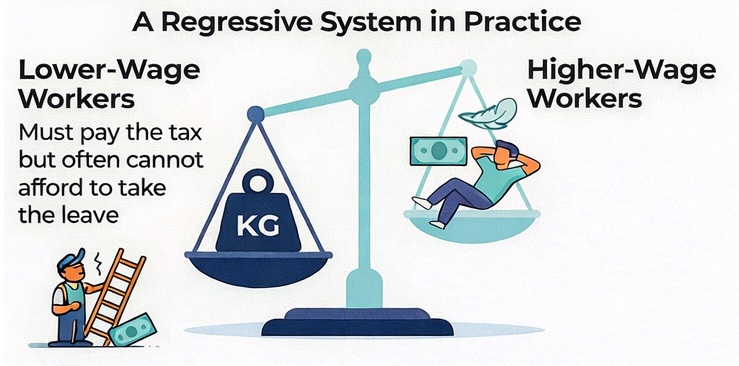WA Cares Director Ben Veghte sought to ease lawmakers’ shock and fear about how much of WA Cares’ massive revenue was going to administer the fund. The percentage was misrepresented by the Employment Security Department (ESD) at a recent meeting.
Veghte said of the resulting confusion that the program collected $1.3 billion in its first year and the administrative expenses were a “tiny fraction” of that. “I don't have the exact number, but it's not 25%. I just wanted to make sure that was not something that people left this meeting thinking.”
That was exactly the takeaway for some people. That’s because when Sen. Karen Keiser, D-Des Moines, asked ESD’s Ibrahim Dembele if he had an idea of what ESD retains for administrative expenses, he said, “So far, we are retaining about 25%.”
“How much?” Keiser responded, clearly surprised.
Dembele responded, “Twenty-five percent. Twenty five.”
Keiser continued, “The Employment Security Department is keeping 25% of the revenue?”
Dembele said, “Yes.” He explained doing so was to ensure enough money was in the trust fund, instead of sending all the money to the Washington State Investment Board.
“You can’t be getting 25% for administrative expenses,” Keiser implored. “That seems excessive to say the least.”
Several other lawmakers rightly expressed similar concern. That is when Veghte let them know there was confusion over terms and when Dembele said he would get lawmakers paperwork to better show expenses.
I sought that paperwork, too, as the 25% number did not match up with my prior research of the program's administrative costs. Sure enough, the percentage is far lower.
Adam Rudnick, the interim deputy communications director with ESD, explained it well. He said, “Employment Security Department retains a three-month reserve for contingency, which is 25% of annual WA Cares appropriations (i.e. the total administrative funding for agency operating expenses, not total revenue collected) for the three agencies that administer the program.”
Appropriations, not revenue. That makes much more sense. Twenty-five percent of $1.387 billion of revenue is $346.75 million. Rudnick reports that as of July 31, the program’s administrative expenses for fiscal year 2024 were $31.2 million, which is 2.25% of the revenue.
When I asked if ESD thinks the just-in-case money being kept is too much, Rudnick said, “This is a new, first-in-the-nation program and hence the precise amount of contingency reserve needed is uncertain and will be fine-tuned over time.” Fair enough. I also asked if the annual cost to administer WA Cares would be as high as it was in 2024. I don’t know the answer yet, but I hope and expect the amount is less than it was in the program’s first year running.
Easy spending cut
I have ideas for administrative spending cuts. At the top of the list, the state should discontinue spending millions on a superfluous marketing campaign for a program workers are already forced to fund. As I wrote earlier this year, in the beginning of April, almost $5 million taxpayer dollars had been spent on “WA Cares outreach.” The spending has included ad creation, paid media purchases, mailers, staff time for outreach efforts and WA Cares website management. An additional $310,900 was spent developing the WA Cares website.
Since April, the “outreach” and advertising for WA Cares has continued, and more spending is planned.
That’s questionable, if not inappropriate. Initiative 2124 will be on the November ballot. If voters say "yes" to it, WA Cares would be optional for all workers. Creating an affinity for WA Cares, which was a stated goal early on, should have never begun, let alone be allowed to continue while voters are considering whether or not they want to keep participating in WA Cares.
Twenty-five percent is far different from 2.25%. No matter the percentage (which in either case represents millions of taxpayer dollars), any administrative expense for a solvency-challenged program that offers false promises to Washington state workers is too much.






